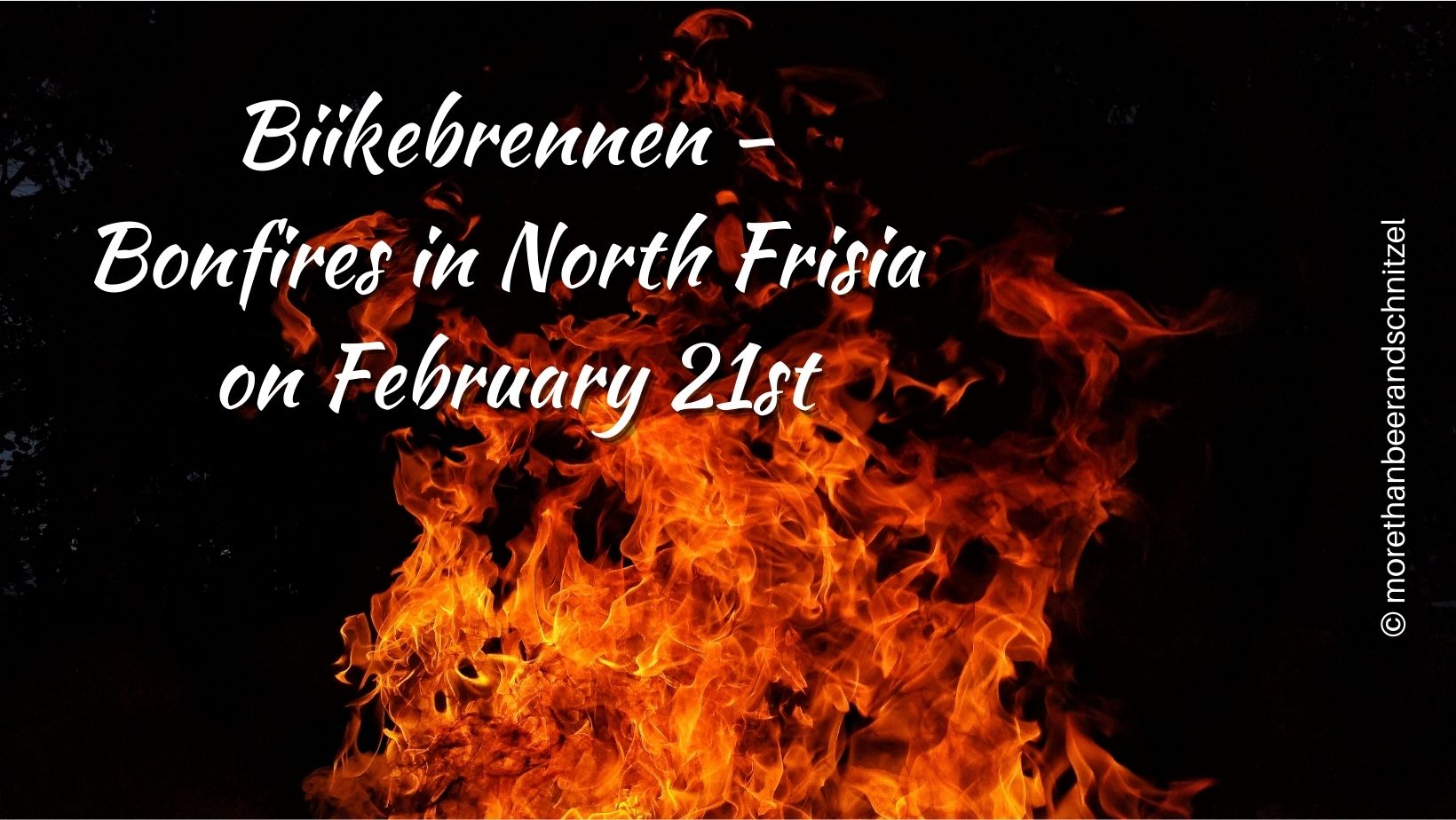On the evening of February 21st, you can see bonfires light up the North Sea coast, the islands and Halligen. This North Frisian and South Jutish custom is called Biikebrennen.
biike is North Frisian and means Bake or Feuermal, -zeichen, in English fire signal. In Denmark, it is called Pers Awten or Pers Aften which means Peters Abend and refers to the eve of the Feast Day of the Chair of St. Peter (February 22nd), in German Petritag or Stuhlfeier Petri.

Possible Origins
The origins of this fire custom are not entirely clear. But there are multiple explanations.
It is said that people used the fires to banish evil spirits and protect the seeds for the next planting season. This might apply to many fire customs that can be witnessed around Germany.
In 1403, the Hanse (a powerful trade association of many cities in Northern Europe) decreed that seafaring needed to rest from Martini (November 11th) until Petritag (February 22nd). Most people on the islands and the coast made their living from whale hunting and fishing, therefore February 21st marks the day before they were allowed to go whale hunting again. The fires were there to help them navigate and intended as a good-bye.
It is also said that women on the island Sylt didn’t only light the fires as a good-bye to their husbands but also as a sign to the (Danish) men on the mainland that they were alone again and might need help with some things. 😉
North Frisia - Nordfriesland

The map shows North Frisia. The dark red indicates the North Frisian language region while the dark red and the dark orange are North Frisia.
The area that is not gray is the county or district Nordfriesland (North Frisia).
The striped areas indicates the contact zone between North Frisians and Jutlanders.
The gray line indicates the Uthlande (Low German for the outer lands). It encompasses the islands, halligen, and marshes off the North Frisian mainland. The term was first used in the 12th century when the area culturally and politically varied greatly from the mainland.
While Heligoland belongs to North Frisia it politically belongs to the county of Pinneberg.

The Wappen (crest) of North Frisia reads “Lever duad as Slav” meaning “Lieber tot als Sklave“, in English “Rather dead than a slave”.
Variations of Biikebrennen
The customs around Biikebrennen vary a little from community to community. Often people save their Christmas trees for the fire, they might also cut down their shrubs and bushes and burn the cuttings. Sometimes a straw doll is burned. It can either represent winter or in some cases it stands for the ministry of Peter and the pope and the Christian religion. The straw doll in those cases is called Petermännchen (little man Peter).
On the island of Sylt, a wooden barrel or bucket is put on top of the wooden stack, and when it falls, winter falls. The “Biike” on Sylt starts with a speech in the Sylter dialect of Frisian which ends with Maaki di biiki ön, (Macht die Biike an) as in “light the fire”. The Biikebrennen is often followed by Grünkohlessen (eating kale) and the kids on Sylt and Föhr are off the next day.
The video below shows the wooden barrel falling.
In recent years, you can also enjoy a bonfire in some cities along the Baltic Sea coast. Though Biikebrennen is definitely a North Frisian tradition.
Since 2014, Biikebrennen is considered an immaterial cultural heritage of Germany.


